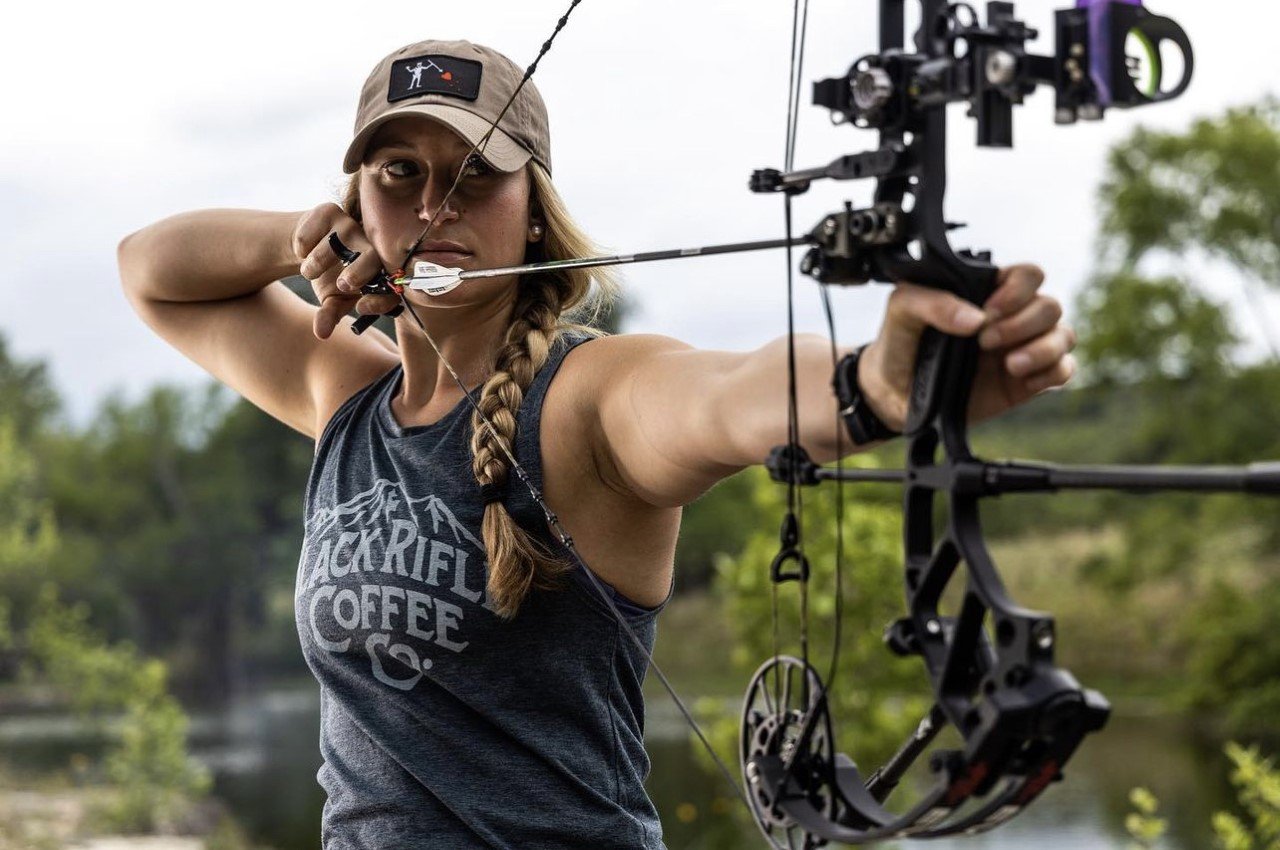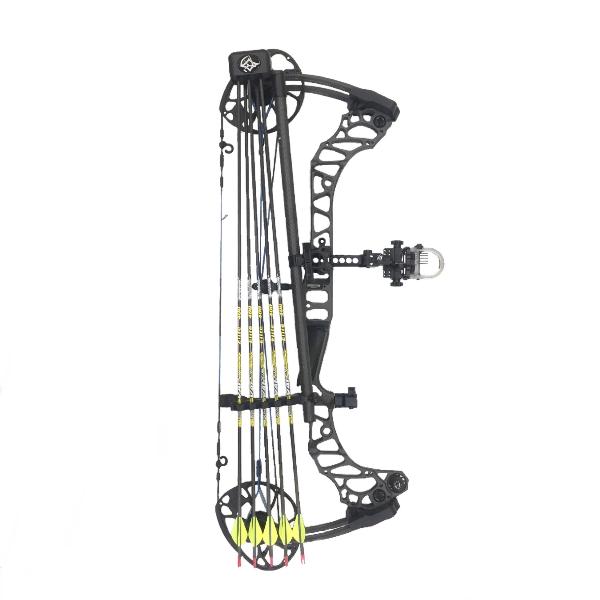Understanding Archery Stabilizers: A Complete Guide for Beginners
Understanding Archery Stabilizers: A Complete Guide for Beginners
Blog Article
The Ultimate Overview to Picking the Right Archery Stabilizer for Boosted Accuracy
Archery is a sport that requires precision and accuracy, and selecting the ideal equipment is critical for attaining ideal results. Among the numerous accessories readily available, an archery stabilizer plays a significant duty in enhancing precision. With so lots of options on the market, it can be overwhelming to figure out which stabilizer is the best fit for your demands. In this comprehensive overview, we will check out the key variables to think about when selecting an archery stabilizer for improved precision. From discovering the optimal length to recognizing the different designs and materials, we will certainly dive into whatever you require to understand to make an informed decision. Whether you are a seasoned archer looking to upgrade your equipment or a beginner seeking guidance, join us on this trip as we unravel the tricks to choosing the excellent archery stabilizer.
Size: Locating the Optimal Stabilizer Length
Determining the suitable stabilizer length is critical when picking an archery stabilizer for optimum efficiency. The size of a stabilizer straight impacts the equilibrium, security, and precision of the bow. A stabilizer that is too long can make the bow really feel hard and top-heavy to regulate, while a stabilizer that is also brief may not provide enough security and dampening of vibrations. Finding the ideal size calls for thinking about factors such as the archer's shooting style, bow weight, and personal choice.
A longer stabilizer, normally varying from 8 to 12 inches, can supply higher stability and lower bow torque. This is specifically beneficial for archers that shoot with a high draw weight or those that have a propensity to torque the bow throughout the shot. The included length assists to distribute the weight uniformly and counterbalance any kind of torque or activity.
On the various other hand, a shorter stabilizer, usually in between 4 to 7 inches, uses extra maneuverability and quicker reaction. It is preferred by archers that shoot with a lower draw weight or those who require even more flexibility, such as hunters or 3D shooters. The much shorter length allows for easier movement through tight areas and faster modifications.
Ultimately, the optimal stabilizer length is an issue of personal choice and shooting style. It is advised to try out various sizes and observe the impacts on security and precision. Consulting with seasoned archers or experts can also provide beneficial understandings and referrals.
Weight: Figuring Out the Appropriate Stabilizer Weight
After thinking about the ideal stabilizer length, the following essential factor to consider when choosing an archery stabilizer is identifying the suitable stabilizer weight - archery stabilizer. The weight of the stabilizer plays a vital duty in enhancing precision and stability throughout the shot
The weight of the stabilizer influences the equilibrium and control of the bow. A much heavier stabilizer can provide boosted stability and control, especially for shooters with a propensity for irregular shots or shaky hands. It helps to take in the resonances and recoil generated by the bow, reducing torque and reducing the effect on the arrow's flight.
On the various other hand, a lighter stabilizer permits a quicker and extra responsive bow. It can be useful for shooters who prioritize ability to move and rate over stability. Lighter stabilizers also minimize fatigue throughout lengthy shooting sessions or competitions.
To determine the ideal stabilizer weight for your demands, it is very important to consider your capturing style, physical strength, and bow setup. Explore different weights and observing the effect on your capturing performance is essential to finding the excellent balance.
Ultimately, the optimal stabilizer weight will certainly differ for every individual archer. It is recommended to begin with a modest weight and make adjustments based upon personal choice and shooting outcomes. Remember, the objective is to achieve a secure and controlled shot, while additionally preserving convenience and ease of usage.
Products: Choosing the Right Products for Longevity and Performance
When picking an archery stabilizer, it is vital to very carefully her explanation consider the materials utilized in its building and construction to ensure longevity and optimize efficiency. The selection of materials can considerably influence the overall high quality and efficiency of the stabilizer.
One of one of the most commonly used products for stabilizers is carbon fiber. Carbon fiber supplies a high strength-to-weight ratio, making it light-weight yet extremely solid. This product reduces and takes in vibrations bow torque, causing improved stability and accuracy. Furthermore, carbon fiber stabilizers are resistant to temperature level changes and are less most likely to warp or bend with time.
One more prominent product for stabilizers is light weight aluminum. Light weight aluminum stabilizers are recognized for their toughness and strength. They give superb dampening abilities, minimizing the amount of shock and vibration transferred to the shooter's hand. Aluminum Visit Website stabilizers additionally supply a large range of modification choices, enabling archers to change the weight and length to suit their choices.
Some stabilizers are constructed using a mix of materials. A stabilizer might have a carbon fiber core covered in an aluminum covering. This hybrid style combines the most effective top qualities of both products, supplying optimal security, durability, and efficiency.
Design: Recognizing the Different Stabilizer Layouts and Their Impacts
Taking into consideration the products used in archery stabilizers, it is very important to now delve into the various styles of stabilizers and their respective results. The design of an archery stabilizer plays an important role in improving accuracy and lowering resonance during the shot. There are numerous different layouts offered on the market, each with its own distinct qualities.

An additional prominent layout is the side bar stabilizer. This style includes attaching a brief pole sideways of the bow, alongside the primary lengthy rod. Side bar stabilizers help in counterbalancing the weight of devices, such as sights or quivers, and supply extra security to the bow.
Some stabilizers include adjustable weights. These stabilizers enable archers to tweak the equilibrium and feel of their bows by including or getting rid of weights. This function is specifically beneficial for archers who favor a details weight distribution or wish to trying out various setups.
Moreover, some stabilizers incorporate wetting innovation to reduce vibration and sound. These stabilizers usually have built-in dampeners or utilize products that absorb resonances, causing a smoother and quieter shot.

Accessories: Checking Out Added Devices for Boosted Stability
These devices are designed to work in conjunction with the archery stabilizer to supply an also better level of stability and precision. One such device is the V-bar or the side stabilizer install.
Another device that can improve security is a bow sling. A bow sling is a strap that affixes to the bow and permits the archer to maintain a kicked back hold on the bow deal with without the worry of dropping it (archery stabilizer). This unwinded hold aids to minimize muscle mass tension and permits for a much more consistent and stable shot
Furthermore, a stabilizer weight system can be used to fine-tune the equilibrium and stability of the bow. These weight systems commonly include little weights that can be included or gotten rid of from the stabilizer to change the equilibrium point of the bow. By finding the optimum balance point, archers can attain an extra precise and secure shot.
Final Thought
Finally, selecting the appropriate archery stabilizer includes considering variables such as length, weight, products, design, and added devices. The optimal stabilizer size and weight will depend upon specific preferences and shooting design. Selecting resilient products is essential for resilient performance. Recognizing the different stabilizer styles will certainly aid news boost accuracy. Last but not least, checking out additional accessories can additionally boost stability during archery capturing.
Establishing the excellent stabilizer size is essential when selecting an archery stabilizer for ideal efficiency. A stabilizer that is too long can make the bow really feel challenging and top-heavy to control, while a stabilizer that is too brief may not offer enough stability and dampening of vibrations - archery stabilizer.Taking into account the materials used in archery stabilizers, it is essential to now dig into the different styles of stabilizers and their particular results. Side bar stabilizers help in counterbalancing the weight of accessories, such as quivers or sights, and provide extra stability to the bow
These weight systems commonly are composed of tiny weights that can be included or gotten rid of from the stabilizer to readjust the equilibrium factor of the bow.
Report this page